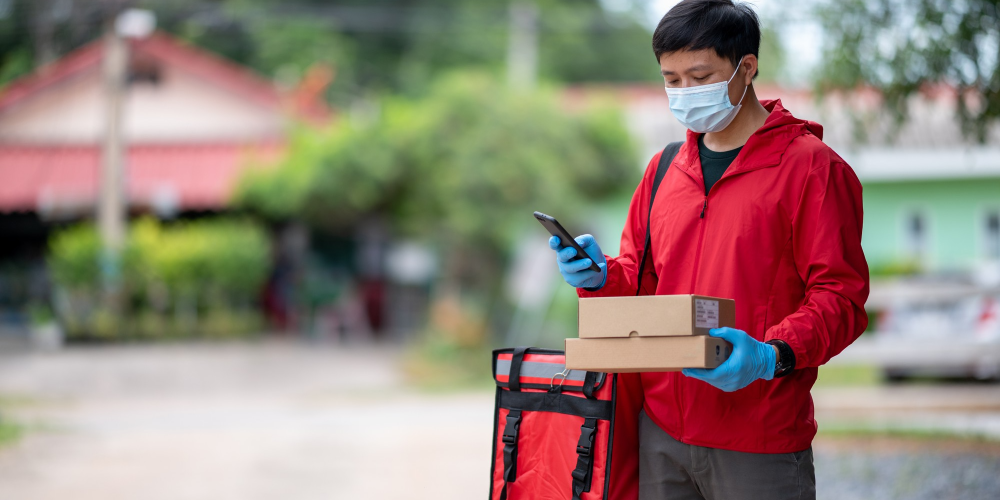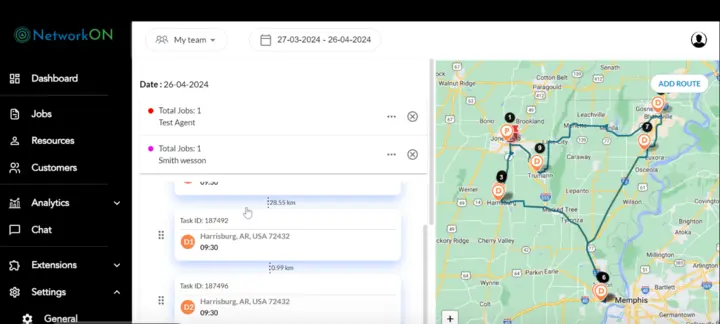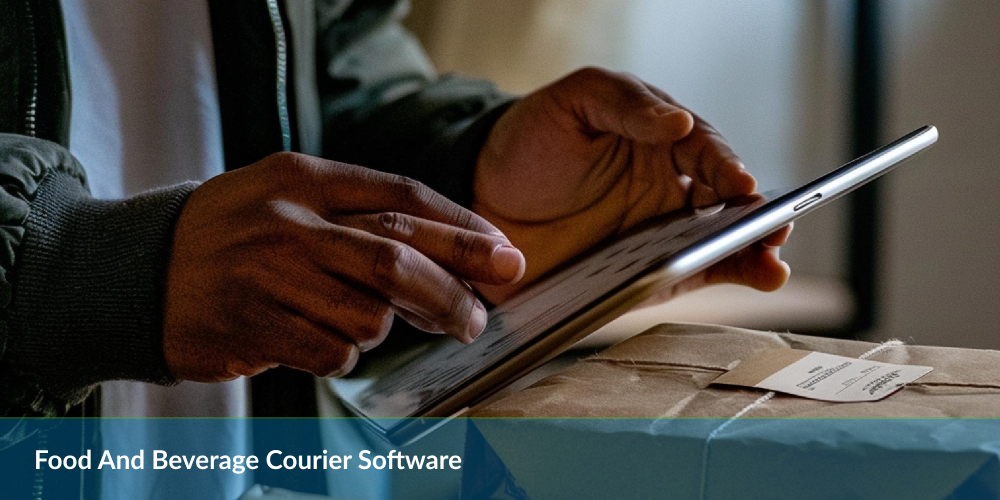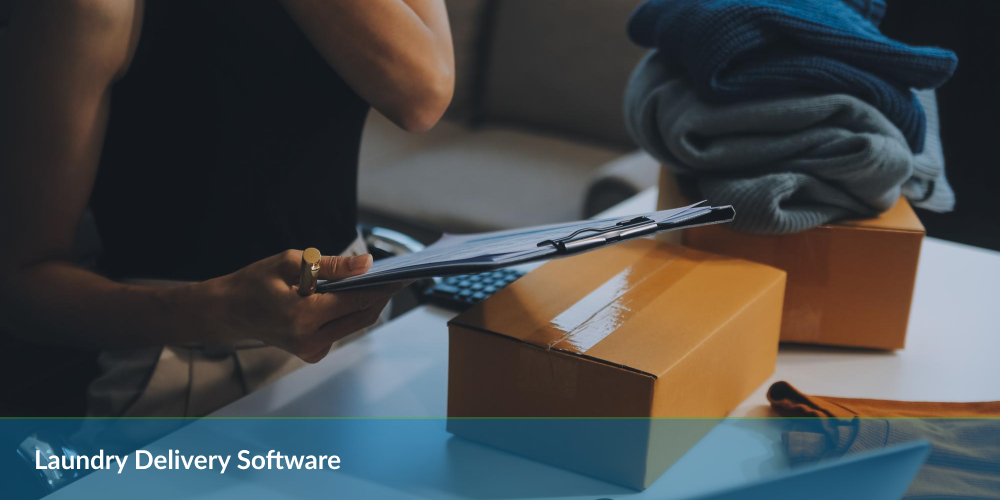Table of Contents
Food and beverage courier software is an advanced technology platform specifically designed to streamline the order delivery process for businesses in the culinary industry. By integrating this software, food and beverage courier software businesses transform their operations, driving efficiency and accuracy from when an order is placed to the final mile of delivery.

With features like real-time tracking, route optimization, and customer communication, food and beverage courier software is no less than the central nervous system of modern food delivery services. Simultaneously, they contribute to an impressive elevation in customer satisfaction and a notable reduction in operational costs. As the industry thrives on punctuality and order accuracy, harnessing the capabilities of such software is not merely an advancement; it is at the forefront of competitive strategy in an ever-evolving marketplace.
Top 05 Food and Beverage Courier Software
NetworkON
NetworkON is a comprehensive delivery management software designed to streamline logistics and optimize businesses’ routes. It offers real-time tracking, route planning, and automated dispatch solutions.
Pros:
- Advanced route optimization with real-time updates.
- Scalable for businesses of all sizes, from startups to enterprises.
- Supports multiple delivery models, including last-mile and on-demand services.
Cons:
- Can have a steep learning curve for non-technical users.
- Higher cost compared to basic delivery management platforms.
Tookan
Tookan is a delivery and workforce management solution that simplifies business logistics by providing features like task management, automated dispatch, and real-time tracking.
Pros:
- Comprehensive task management for delivery personnel.
- Integrates with a variety of third-party services for added functionality.
- Highly customizable to suit specific business needs.
Cons:
- Limited customer support response time.
- Can be overwhelming for small businesses with limited operations.
Shipday
Shipday is real-time delivery management software designed for restaurants, grocery stores, and local delivery businesses. It helps businesses easily manage and track their deliveries.
Pros:
- Simple and intuitive interface, ideal for small businesses.
- Affordable pricing plans.
- Seamless integration with popular e-commerce and restaurant platforms.
Cons:
- Limited scalability for larger enterprises.
- Fewer advanced features compared to other delivery management platforms.
Upper Route Planner
Upper Route Planner is a delivery route optimization software that helps businesses with route planning, driver management, and time-saving solutions.
Pros:
- Extremely efficient in reducing delivery times with optimized routes.
- Easy-to-use interface with clear route mapping.
- Great for small and medium-sized businesses focused on efficient deliveries.
Cons:
- Lacks advanced features for dispatch automation.
- Limited third-party integrations for expanded functionality.
TapMango
TapMango is a customer loyalty and engagement platform that helps businesses retain customers and increase sales through features such as loyalty programs, marketing campaigns, and customer insights.
Pros:
- Highly customizable loyalty programs tailored to specific business needs.
- Excellent customer engagement features, including push notifications and SMS marketing.
- Strong analytics tools for tracking customer behavior and engagement.
Cons:
- More focused on loyalty and engagement, lacking robust delivery management features.
- Requires some effort for initial setup and customization.
Each solution has a unique value proposition suited to different business needs and sizes.
Pro Tip: If you are choosing a delivery management solution, focus on your business size, technical needs, and scalability to ensure the platform you select can grow with your operations while offering the features that matter most.
Streamlining Orders with Integration into POS Systems
POS integration, or Point of Sale integration, is a bridge between your restaurant’s point-of-sale or point-of-purchase and other software apps, like online ordering, delivery management, or inventory management systems.
Source: Deonde
Courier software is a linchpin in food and beverage delivery, connecting the dots between order intake and out-for-delivery status. By integrating directly with Point of Sale (POS) systems, this software transcends mere convenience to become a catalyst for efficiency and accuracy in order processing. Will POS system integration streamline food and beverage orders? Undoubtedly. The merger of these systems allows data to flow unhindered from when an order is placed to when it is handed off to the courier.
How Software Manages to Streamline Food and Beverage Orders
When an order emerges through a POS, software tailored for couriers instantaneously retrieves and sorts the information. This immediate data transfer negates any need for double-handling or manual entry, thus reducing error and saving precious time. Complex and time-sensitive orders are sorted and queued with dexterity, ensuring priority dispatches are flagged and acted upon with the urgency they require.
The Benefits of Seamless POS System Integration for Real-Time Workflows
Real-time workflow optimization unfolds naturally when courier software and POS systems shake hands. The benefits are many: inventory levels get updated instantly, reducing the likelihood of out-of-stock scenarios; kitchen staff receive immediate notifications of incoming orders, allowing them to manage their cooking queue effectively; and delivery personnel are dispatched without delay. The fusion of these components streamlines the process from the kitchen to the customer’s door, condensing what was once a complex operation into a smooth, continuous flow.
- Inventory synchronization minimizes delays and maximizes order fulfillment efficiency.
- Kitchen operations become more responsive to order volume fluctuations.
- Delivery dispatch is tightly coordinated with order preparation, shrinking the window between order completion and handoff.
By placing real-time information at the core of the business model, courier software integrated with POS systems ensures that no moment is wasted or an error is inadvertently introduced. From the smallest food truck to the largest restaurant chain, embracing such technology will reshape their operating landscape toward harmonious productivity and heightened customer satisfaction.
Unlocking Efficiency in Routing and Deliveries

By harnessing route optimization algorithms, these platforms ensure deliveries reach their destinations promptly and efficiently.
Route Optimization for Timely and Efficient Food and Beverage Deliveries
Route optimization is more than just mapping the shortest path. It involves analyzing numerous factors, including traffic patterns, distance, delivery windows, and vehicle capacity. Integration of this technology into courier software directly links to punctuality in delivery services. Efficiency not only improves customer satisfaction but also heightens the overall productivity of operations.
Enhancing the Customer Experience Through Real-Time Tracking and Engagement

By integrating real-time tracking features, businesses meet customer expectations and foster trust through transparency. Customers who track their meals with GPS-enabled software know the exact arrival time, reducing uncertainty and augmenting satisfaction.
Key Features of Real-Time Order Tracking for Customers
- GPS-enabled tracking lets customers view the courier’s location and estimated arrival time.
- Notifications alert customers at each stage: order preparation, dispatch, and moments before delivery.
- Live updates and communication tools enable customers to interact with couriers for specific instructions or feedback.
Real-time engagement tools like live chat and support are reshaping customer experiences. When customers have inquiries or need assistance, instant access to support mitigates frustration. It can quickly turn potential issues into positive, resolved experiences.
How Technology Is Reshaping the Customer Experience in Food and Beverage Delivery
Technology plays a critical role in refining the customer experience. Order customization, delivery time predictions based on traffic patterns and order history, and interactive platforms all converge to elevate the customer journey within the food and beverage industry.
Furthermore, data collected from these engagements fuel continuous improvement. Delivery services can now analyze patterns, anticipate customer preferences, and personalize future interactions. This commitment to customer-centric innovation keeps clientele loyal and encourages repeat business.
Real-time tracking and engagement software have marked a pivotal shift in how businesses approach delivery logistics and customer satisfaction. With these advancements, customers relish the convenience and clarity provided by their preferred food and beverage services, solidifying their long-term patronage.
Payment Processing Made Easy and Secure
Seamless payment processing is a cornerstone of modern food and beverage courier software. By incorporating robust payment solutions, the software simplifies customer and business transactions. By streamlining this crucial component, restaurants and delivery services expedite checkout, ensuring a smooth end to the customer journey.
Businesses now tackle the complexities of customer data security with advanced encryption and compliance with standards such as PCI-DSS. This commitment to protecting sensitive information fosters trust. Customers enjoy the convenience of various payment methods, such as credit cards, mobile pay, and online transactions, with the confidence that their data remains secure.
- Integration of payment gateways allows couriers to accept various payment options.
- State-of-the-art encryption methods safeguard transaction data in transit.
- Regular software updates address emerging security threats promptly.
- Automated compliance checks ensure that payment processing adheres to global standards.
With these measures in place, the food and beverage delivery industry meets customer expectations for simplicity and speed and maintains the highest payment security standards.
Revolutionizing Driver Management in Food and Beverage Logistics
Food and beverage courier platforms employ advanced algorithms to optimize driver schedules and ensure availability meets demand. Using smart software solutions maximizes the delivery fleet’s effectiveness and heightens the distribution network’s overall efficiency.
Courier software balances cost efficiency and delivery speed by managing driver resources. Sophisticated scheduling tools consider numerous variables, including traffic patterns, delivery windows, and driver performance metrics, to assign jobs that reduce costs and minimize delivery times.
Intelligent Scheduling for Peak Performance
Driver schedule optimization hinges on predicting and adapting to fluctuating delivery volumes. Driver availability matches forecasted demands, ensuring that delivery operations can scale dynamically with the ebb and flow of orders. This adaptive approach contributes to seamless day-to-day operations, even during peak hours or unexpected surges in delivery requests.
Cost Efficiency Meets Speed
Efficient driver management also considers the financial implications of delivery strategies. Software that manages driver resources can reduce operational costs by selecting the most economical routes and maximizing the number of deliveries a single driver can complete in a shift. Such capabilities ensure that food and beverage delivery services maintain profitability while delivering timely.
- Schedule optimization increases delivery capacity without compromising on service levels.
- Route planning tools within courier platforms diminish fuel costs and time on the road.
- Automated dispatch systems react quickly to changes, such as order cancellations or traffic disruptions.
- Analytics derived from driver performance inform scheduling decisions, fostering an environment of continuous improvement.
In conclusion, food and beverage courier software with robust driver management and scheduling capabilities significantly enhances the efficiency and reliability of delivery services. As demands on food delivery systems continue to grow, integrating such technologies will be a decisive factor in the successful operation of courier networks.
Embracing Contactless Delivery Options through Software
The food and beverage delivery landscape has been reshaped, with contactless delivery now a standard customer expectation. One driving force behind this shift was the global pandemic that necessitated minimal contact to ensure health and safety. As the world transitions to a new normal, contactless delivery remains a preferred choice for many customers, reflecting their desire for convenience and minimal interaction.
Software Solutions Enabling Contactless Interactions
Digital advancements in specialized courier software have emerged to support these contactless preferences. Such software orchestrates the interchange between customers, delivery personnel, and food service providers. To facilitate a contactless exchange, these solutions typically include features that allow for prepayment, communication of delivery instructions, and order drop-off notifications.
Integration of contactless delivery options within software systems aligns with customer expectations and streamlines the delivery process. By leveraging GPS tracking, the software ensures that customers receive timely updates on their orders, allowing them to prepare for pickup without direct interaction. Drivers can verify deliveries through in-app features such as photo capture of the delivered items, thus upholding service quality and customer satisfaction.
Complex algorithms within these software systems synchronize delivery routes with order dispatch times. Ensuring contactless delivery does not delay service requires precision in timing and seamless coordination of back-end operations. Companies that adopt these software systems will not only meet but exceed customer expectations, delivering orders with impeccable timing and without direct contact when necessary.
The Sustainable Courier: Packaging, Waste, and Environmental Impact
The rise in food and beverage delivery services has prompted an increased focus on sustainable packaging to minimize waste and environmental impact. Advances in materials science have led to the development of more eco-friendly packaging options. Packaging materials such as biodegradable plastics and plant-based solutions are being adopted to reduce the carbon footprint of deliveries. Additionally, businesses optimize packaging sizes and shapes to transport items and mitigate waste securely.
Courier software significantly streamlines the sustainability of delivery operations. With functionality designed to optimize routes, the software ensures the shortest and most efficient journey to reduce fuel consumption and emissions. Moreover, managing delivery schedules and routes effectively reduces unnecessary trips, conserving energy and reducing the overall costs associated with deliveries.
- Optimized logistics with eco-friendly packaging lead to fewer materials used and fewer harmful disposables entering the ecosystem.
- Efficient routing reduces the carbon footprint by reducing the distance and time spent on the road.
- Tracking and management systems enable consumers and businesses to contribute to waste reduction by selecting grouped delivery options, further lessening environmental impact.
The integration of courier software promotes responsible resource usage. Inventory level surveillance and demand forecasting support the reduction of excess food production, leading to less potential food waste. Strategic inventory allocation planning based on real-time data also plays a critical role in limiting overstocking and the resultant wastage.
These intelligent solutions facilitate a circular economy in the food and beverage sector. Firms are encouraged to analyze packaging life cycles, leading to the adoption of reusable materials and containers. The software’s capacity to track these containers promotes efficient return logistics, enabling packaging to be reused multiple times before recycling or disposal.
An efficient, sustainable delivery process with a reduced environmental impact is more achievable now than ever. Courier software remains at the heart of these advancements, consistently proving itself as a game-changing tool for companies striving toward more sustainable and sustainable beverage delivery.
The Practices Frontiers of Food Delivery: AI and Machine Learning
The evolution of food and beverage courier software accelerates as artificial intelligence (AI) and machine learning (ML) integrate into their systems. These technologies harness data, learning from patterns and making informed decisions that streamline delivery processes. With AI, courier services optimize routes dynamically in real-time, and ML algorithms predict demand spikes, assisting in inventory management.
According to the National Library of Medicine, the Integration of machine learning (ML) technologies into the realm of smart food safety represents a rapidly evolving field with significant potential to transform the management and assurance of food quality and safety.
Exploring the Role of AI and Machine Learning in Courier Software
Delivery companies implementing AI in their courier software witness reduced delivery times and improved customer satisfaction. Machine learning algorithms analyze past data to predict future outcomes, equipping businesses with the foresight to scale operations efficiently. This proactive approach transitions food delivery into a predictive rather than reactive service.
Predictive Analytics and Intelligent Systems for Operational Optimization
- Route optimization algorithms consider traffic, weather, and delivery windows, ensuring drivers take the fastest, most efficient routes.
- Intelligent inventory systems predict required stock levels, reducing waste and ensuring restaurants can meet consumer demand.
- Automated customer support features address common queries and issues, freeing staff to handle more complex customer interactions.
Adopting these intelligent systems transforms the logistics of food delivery, turning vast swaths of data into actionable insights. As a result, companies see a tangible improvement in operational efficiency.
As the technologies continue to mature, their influence extends beyond mere predictions. AI is revolutionizing the food and beverage industry, with personalized recommendations altering how businesses upsell and cross-sell menu items, significantly increasing average order values.
Reflect on how this sophisticated technology might shape our interactions with our favorite food and beverage establishments. The potential for growth and advancement holds immense promise, with AI and ML leading the charge into a more connected, efficient, and intelligent future for food delivery services.
Delivering the Future: Mobile App Development for Food Delivery
A discernible surge in demand for food and beverage delivery services has solidified the need for a robust mobile app presence. Customers expect accessibility and convenience at their fingertips, leading businesses to focus on custom mobile app development. These digital tools must accommodate a range of features and functionalities to meet the high expectations of modern consumers.
Essential Features for Delivery Apps
Seamlessly integrated payment gateways enable secure and varied transaction options, addressing a core need for versatility in payment methods. Users expect push notifications for order updates, a necessity for keeping them informed about their order status in real time. Moreover, a simple and intuitive user interface encourages repeat usage, reducing barriers to order placement.
GPS tracking capabilities entrust customers with monitoring their delivery, fostering transparency and trust in the service. Customer reviews and rating systems empower consumers to make informed choices and press service providers to maintain exceptional standards. A personalization framework, including past orders and recommendations, delivers a tailored experience, heightening user engagement.
Advancing Mobile App Technologies
As voice assistants become ubiquitous, voice command features enable hands-free operation, significantly enhancing user convenience. Artificial intelligence predicts user preferences, suggests orders, and improves customer journeys. Meanwhile, augmented reality menus could transform how customers view and select their meals, providing an immersive and interactive experience.
Multilingual support breaks language barriers, widening the app’s reach. In-app messaging facilitates direct communication between customers and delivery personnel or customer service, ensuring queries and issues are resolved swiftly.
- Secure payment gateways
- Push notifications for real-time updates
- User-friendly interface
- GPS-enabled delivery tracking
- Review and ratings functionality
- Personalized experiences
- Voice command options
- Artificial intelligence for preference predictions
- Augmented reality-enhanced menus
- Multilingual app support
- In-app messaging systems
Mobile app development for food delivery is about more than just present-day needs. Anticipating the evolution of consumer behavior and technological advancements ensures that food and beverage courier apps remain relevant and competitive. By integrating these features and continually innovating, businesses pave the way for the future of food delivery services.
Key Takeaways
- Efficiency in Operations: Food and beverage courier software streamlines the entire delivery process, from order placement to last-mile delivery, enhancing accuracy, reducing manual errors, and optimizing routes to save time and costs.
- Real-Time Tracking: The inclusion of GPS-enabled real-time tracking allows customers to follow their order’s journey, improving transparency, communication, and customer satisfaction.
- POS System Integration: Integrating courier software with POS systems ensures seamless data flow, real-time inventory updates, faster order processing, and error reduction, enhancing overall operational efficiency.
- Driver Management & Route Optimization: Advanced algorithms in courier software help optimize driver schedules and routes, reducing fuel consumption, delivery times, and operational costs, ensuring timely deliveries.
- Sustainability Focus: The software promotes eco-friendly practices through route optimization, minimizing carbon footprints, and supporting sustainable packaging options to reduce environmental impact.
Wrapping It Up!
The right courier software is key to advancing food and beverage courier software. Rather than speculate on the potential benefits, a direct exploration of the software’s capabilities will illuminate how operations can scale, customer satisfaction can soar, and efficiencies can be unearthed. Scheduling a demo is the most effective approach for tangible insights, as it allows one to witness the transformative effect of specialized courier software.
By engaging with a demo, stakeholders can interact with the software’s interface, delve into its features, and ask pertinent questions about its applicability to their needs. Seeing the software in action equips decision-makers with the understanding to make informed choices about streamlining their operations. Each operational pain point can be addressed, with the potential for bespoke solutions that cater precisely to the demands of the modern food and beverage courier software landscape.
Understanding that time is a precious commodity in this industry, software providers are prepared to demonstrate how their platforms can save vast quantities. Experience first-hand how sophisticated routing algorithms reduce delivery times or how integrated payment processing eliminates bottlenecks in cash flow.
Whether you are at the helm of a bustling restaurant chain, managing a burgeoning meal delivery service, or overseeing logistics for a food supply company, elevate your food and beverage delivery with NetworkON’s cutting-edge food and beverage courier software.
Schedule a demo to experience faster deliveries, seamless payment integration, and tailored solutions. Streamline operations and boost customer satisfaction today!
Frequently Asked Questions
What is food and beverage courier software?
Food and beverage courier software is a specialized tool designed to manage and streamline the delivery process for restaurants, cafes, and other food establishments. It helps automate order dispatching, optimize delivery routes, track deliveries in real-time, and manage driver schedules, ensuring timely and efficient service.
How does courier software improve delivery efficiency?
The software uses advanced algorithms to optimize delivery routes, reducing travel time and fuel consumption. It also integrates with POS systems, automating order processing and minimizing human error. Additionally, real-time GPS tracking allows for better coordination and transparency between businesses, drivers, and customers.
Can courier software help with customer satisfaction?
The software provides real-time order tracking, allowing customers to monitor their deliveries from preparation to arrival. It also enables communication between customers and drivers, ensuring any issues can be quickly addressed. Push notifications for updates and personalized recommendations also enhance the customer experience.
Is courier software suitable for small food businesses?
Absolutely! Courier software is scalable and can be tailored to fit businesses of all sizes. For small food businesses, it can automate order dispatching, manage drivers more efficiently, and offer cost-saving benefits through route optimization and better resource management.




0 Conversations